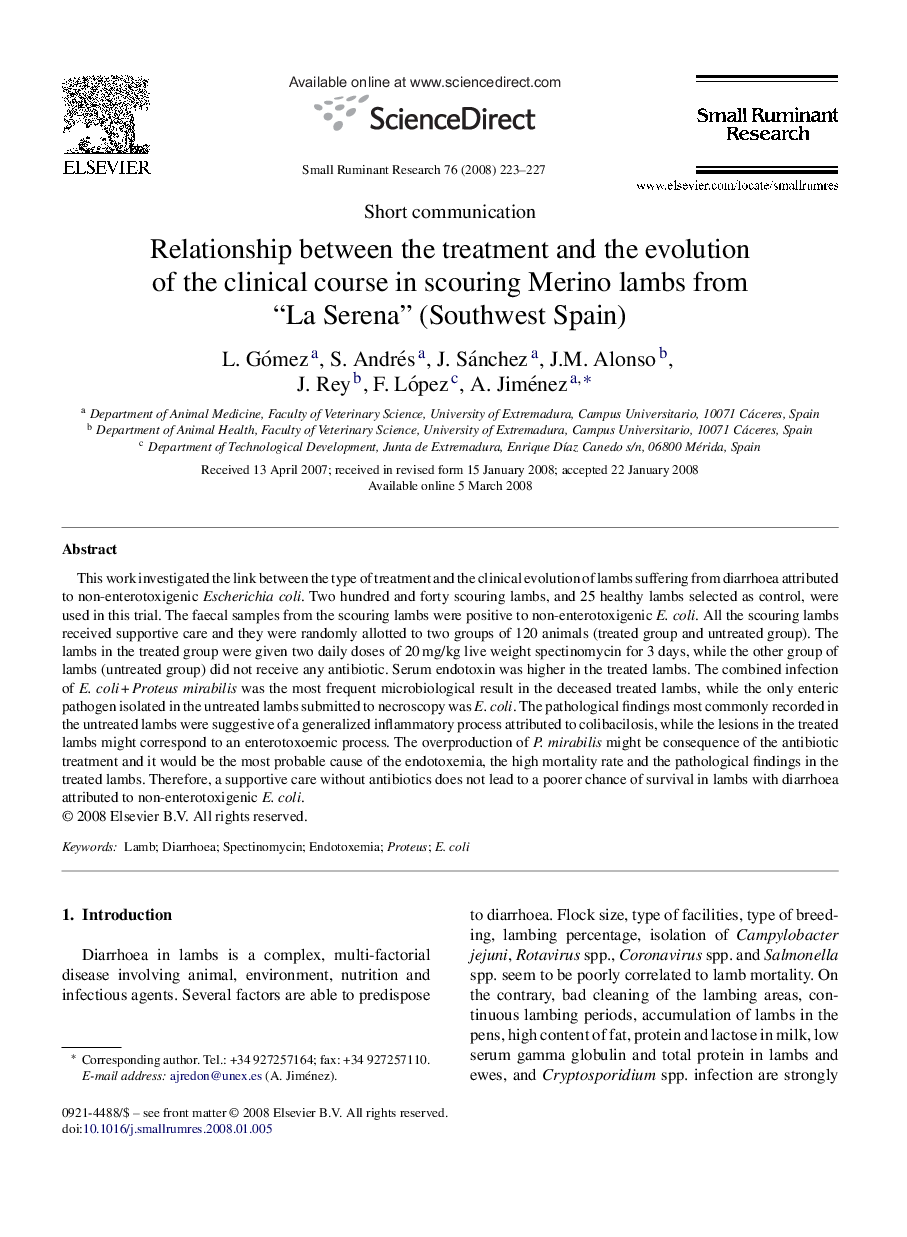| Article ID | Journal | Published Year | Pages | File Type |
|---|---|---|---|---|
| 2457998 | Small Ruminant Research | 2008 | 5 Pages |
This work investigated the link between the type of treatment and the clinical evolution of lambs suffering from diarrhoea attributed to non-enterotoxigenic Escherichia coli. Two hundred and forty scouring lambs, and 25 healthy lambs selected as control, were used in this trial. The faecal samples from the scouring lambs were positive to non-enterotoxigenic E. coli. All the scouring lambs received supportive care and they were randomly allotted to two groups of 120 animals (treated group and untreated group). The lambs in the treated group were given two daily doses of 20 mg/kg live weight spectinomycin for 3 days, while the other group of lambs (untreated group) did not receive any antibiotic. Serum endotoxin was higher in the treated lambs. The combined infection of E. coli + Proteus mirabilis was the most frequent microbiological result in the deceased treated lambs, while the only enteric pathogen isolated in the untreated lambs submitted to necroscopy was E. coli. The pathological findings most commonly recorded in the untreated lambs were suggestive of a generalized inflammatory process attributed to colibacilosis, while the lesions in the treated lambs might correspond to an enterotoxoemic process. The overproduction of P. mirabilis might be consequence of the antibiotic treatment and it would be the most probable cause of the endotoxemia, the high mortality rate and the pathological findings in the treated lambs. Therefore, a supportive care without antibiotics does not lead to a poorer chance of survival in lambs with diarrhoea attributed to non-enterotoxigenic E. coli.
